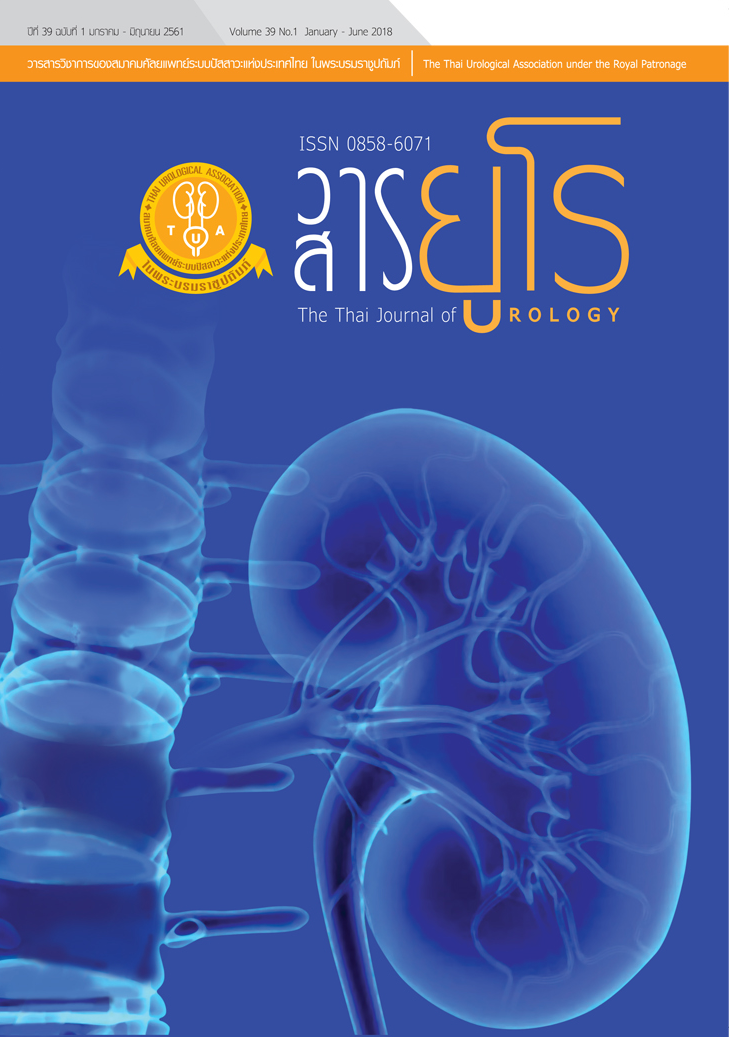Is the amount of resected prostate tissue from transurethral prostatectomy related to outcome?
Abstract
Objective: To evaluate the amount of resected prostatic tissue from transurethral prostatectomy and the improvement of lower urinary tract symptoms (LUTS) in patients with benign prostatic hyperplasia.
Material and Method: The study includes a prospective analysis of 36 men with benign prostatic hyperplasia. Patients were divided into 2 groups according to the mean percentage of resected tissue: group 1, less than mean percentage, group 2, more than mean percentage. Each patient was evaluated using the International Prostate Symptom Score (IPSS) and Quality of Life (QoL) before surgery, and at 1 and 3 months after surgery.
Result: Mean percentage of resected prostate tissue was 28%. IPSS score had decreased by 17.72 at 1 month and 18.05 at 3 months. Patients in group 2 had an IPSS lower than group 1 by 2.33 (P=0.02). QoL score had decreased by 3.56 at 1 month and 3.47 at 3 months (p<0.001). Patients in group 2 had a QoL lower than group 1 by 0.45 (P=0.03).
Conclusion: The amount of resected prostate tissue had a slight influence on the difference in LUTS and QoL after TURP.
References
2. Agrawal MS, Aron M, Goel R. Hemiresection of the prostate: short-term randomized comparison with standard transurethral resection. J Endourol. 2005; 19: 868-872.
3. Ahyai SA, Gilling P, Kaplan SA, et al. Metaanalysis of functional outcomes and complications following transurethral procedures for lower urinary tract symptoms resulting from benign prostatic enlargement. Eur Urol 2010;58:384-397.
4. Alberto A. Antunes, Miguel Srougi, et al. Transurethral Resection of the Prostate for the Treatment of LowerUrinary Tract Symptoms Related to Benign Prostatic Hyperplasia: How Much Should Be Resected? J Urol 2009;35(6): 683-691
5. Barry MJ, Cockett AT, Holtgrewe HL, et al. Relationship of symptoms of prostatism to commonly used physiological and anatomical measures of the severity of benign prostatic hyperplasia. J Urol 1993;150
6. Claus G. Roehrborn, MD. Benign Prostatic Hyperplasia: Etiology, Pathophysiology, Epidemiology, and Natural History. In CAMPBELLWALSH 11ed. Ch.103
7. Welliver C, McVary KT. Minimally Invasive and Endoscopic Management of Benign Prostatic Hyperplasia In CAMPBELL-WALSH 11ed. Ch.105
8. Holtgrewe HL, Mebust WK, Dowd JB, et al. Transurethral prostatectomy: practice aspects of the dominant operation in American urology. J Urol 1989;141:248-253.
9. Holtgrewe HL, Valk WL. Factors influencing the mortality and morbidity of transurethral prostatectomy: a study of 2015 cases. J Urol 1962;87:450-459.
10. Mebust WK. Transurethral resection of the prostate and transurethral incision of the prostate. In: Lepor H, Lawson RK, editors. Prostate disease. Philadelphia: Saunders; 1993. p. 150-163.
11. Nesbit RM: Transurethral prostatic resection. In: Campbell L, Harrison J (ed.), Urology. Philadelphia, Sounders. 1970; p. 2479.
12. Ohlsén H, Ekman P, Ringertz H. Assessment of prostatic size with computed tomography: methodologic aspects. Acta Radiol Diagn (Stockh) 1982;23:219-223



